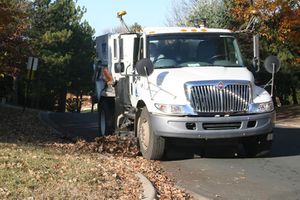
Difference between revisions of "Street sweeping"
m () |
|||
| Line 19: | Line 19: | ||
==University of Minnesota research on street sweeping== | ==University of Minnesota research on street sweeping== | ||
| − | == | + | ==Links== |
| − | *[[ | + | *Internal |
| + | **[https://stormwater.pca.state.mn.us/index.php?title=File:Street_sweeping_lit_review.docx Final Street Sweeping: Survey of Crediting Approaches] | ||
| + | **[[Street sweeping for trees]] | ||
| + | **[[Trees]] | ||
| + | **[[MS4 fact sheet - Street & Parking Lot Sweeping]] | ||
| + | *External | ||
| + | **[https://www.usgs.gov/centers/umid-water/science/using-leaf-collection-and-street-cleaning-reduce-nutrients-urban?qt-science_center_objects=0#qt-science_center_objects Using leaf collection and street cleaning to reduce nutrients in urban stormwater] | ||
| + | **[https://www.chesapeakebay.net/documents/FINAL_APPROVED_Street_and_Storm_Drain_Cleaning_Expert_Panel_Report_--_Complete2.pdf Recommendations of the Expert Panel to Define Removal Rates for Street and Storm Drain Cleaning Practices] | ||
| + | **[[Neat websites and articles for trees]] | ||
==Survey of street sweeping practices== | ==Survey of street sweeping practices== | ||
Revision as of 14:25, 5 March 2021
Contents
Information on street sweeping
- Overview of street sweeping
- Recommended street sweeping practices for water quality purposes - Coming in summer, 2021
- Pollutant removal associated with street sweeping
- Managing street sweepings
- Case studies for street sweeping
- Supporting information
Street sweeping crediting and Phosphorus Calculator
- Street Sweeping Phosphorus Credit Calculator - Coming in spring, 2021
- Street Sweeping Phosphorus Credit Calculator: User Guide
- Methods for sampling street sweeping material - Standard Operating Procedures
- Methods for calculating pollutant reductions (credits) for street sweeping
- Guidance for incorporating street sweeping into the Minimal Impact Design Standards Calculator and MPCA’s Simple Estimator - Coming in summer, 2021
University of Minnesota research on street sweeping
Links
- Internal
- External
Survey of street sweeping practices
The MPCA conducted a survey of cities to determine their street sweeping practices, their interest in a street sweeping credit, and their ability to implement different methods for crediting sweeping. We have not yet fully analyzed the data, but some general conclusions include the following.
- 75 cities responded to the survey and indicated they operate a sweeping program. This was a response rate of close to 50 percent. The responses were distributed geographically across the state and covered a wide range of city sizes (large to small).
- About 78 percent indicated they would be likely to participate in a crediting program
- All but 7 cities can track sweeping information, but 66 percent said they cannot relate material collected to a specific geographic area. This is a question we likely will follow-up with, since being able to relate material to a geographic location is potentially a way of targeting sweeping efforts.
- Most cities estimate volume or mass of material collected, but few measure volume or mass or have the ability to measure dry weight of material collected
- Most cities sweep quarterly or less and most do not specifically sweep in response to fall leave drop
The summary information can be found here.
Related pages
- Trees
- Phosphorus
- Total Suspended Solids (TSS) in stormwater
- Street sweeping for trees
- Neat websites and articles for trees
- Guidance for managing sediment and wastes collected by pretreatment practices: Note - this page contains some information on disposal of material collected in pretreatment practices, include information on street sweepings
